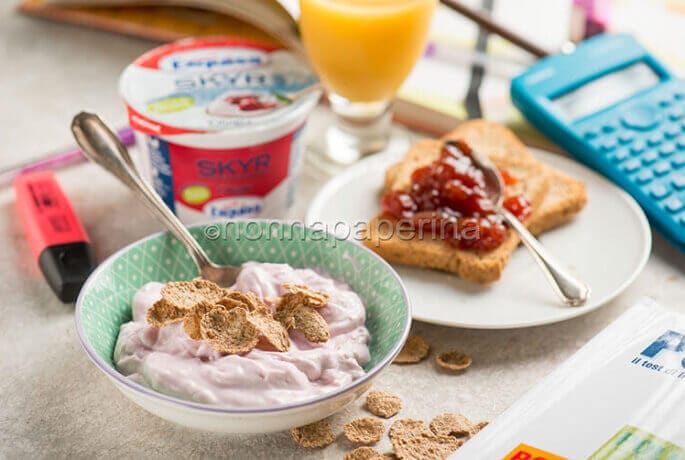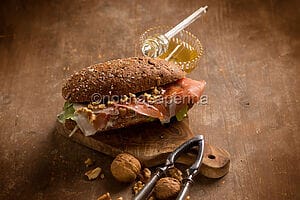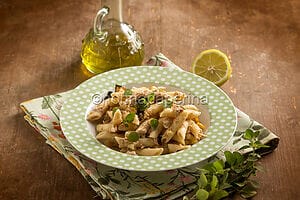Currant

Characteristics and nutritional properties of currants
Currants are often mistakenly considered an exotic fruit. The name could be misleading, as could its presence in many cocktails. In reality, it is a berry particularly widespread in central and northern Europe, where it also grows in the wild. It is smaller in size and has a similar appearance to blueberries.
Currants are a highly valued fruit due to their rich taste that combines sour and sweet notes, as well as their adaptability. It has excellent nutritional qualities, particularly in terms of vitamins. In fact, it contains excellent doses of vitamin C (more than citrus fruits), as well as vitamins B1 and B2. It does not disappoint, even in terms of mineral salts, as it provides potassium, calcium, phosphorus, and, to a lesser extent, iron. It has an excellent concentration of fibres, which is equal to 4%. Finally, currants provide many antioxidants, in particular flavonoids.
The main varieties
There are numerous varieties of currants. Below, I list and describe the three main macro-varieties, each of which corresponds to a very specific colour:
- Red Currants. It is the variety with the highest concentration of antioxidants; in fact, it contains both anthocyanins and lycopene; the latter substance is also present in tomatoes. Its diuretic and digestive qualities are enhanced by its high water content.
- Black Currants. Contains many anthocyanins. In addition, the taste is noticeably sweet, and it has anti-inflammatory qualities.
- White Currants. When compared to other types, it has a lesser dose and range of antioxidants. On the other hand, however, it is very rich in vitamins, in particular C and B6 (which reduce fatigue).
A red fruit with interesting combinations
Unlike other berries, currants are rarely consumed as a table fruit. However, it is still consumed fresh, perhaps in fruit salads or transformed into juices, milkshakes, granitas, smoothies, etc. Furthermore, it can also act as an ingredient, main or otherwise, for more complex recipes. The recipes in which currants are used are essentially sweet, but savoury ones are also found.
Pasta-based first courses are particularly noteworthy as they frequently result in intriguing pairings with various veggies and mushrooms. The same applies to salads, particularly those that contain cabbage or its derivatives. Obviously, currants can be used to make a delicious jam, possibly to stuff tarts, even though the process is a little different from normal. Finally, there are also delicious currant-based liqueurs, which also contain other ingredients.
The most delicious currant-based recipes
Currants are one of the most versatile fruits of all. It is sweet but also a little sour; this is precisely what appears in pastry recipes and also in savoury ones, perhaps to give a sweet and sour touch. Here are some examples.
Cabbage with apples and currants. Since it is made using apples and currants, it is a savoury side dish with hints of sweetness. As soon as the cabbage is stewed, the currants are “cooked” in the saucepan with the other ingredients for this recipe.
Puff pastries with potatoes, caviar, and currants. In this case, the fruit gives a delicate sweet and sour touch while also having a visual impact with its bright red colour. It is a gourmet appetiser that plays on daring but very balanced combinations. The neutral flavour of the pastry is enhanced by the flavour of the caviar and the acidic sweetness of the currants.
Rice salad with cucumber and currants. It is a much more colourful and intriguing version of the classic rice salad. In this instance, the combinations seem somewhat daring, but they end up being incredibly accurate. The currant takes centre stage since it gives the meal a sweet element.
Blueberry tagliatelle with currants and mushrooms. It’s a very interesting and unique first course. Both the pasta and the sauce boast the contribution of red fruits, which are completed with the full-bodied flavour of mushrooms.
Venison saddle with blackcurrant sauce. It is a sumptuous second course with a markedly bittersweet character. The “wild” flavour of the roe deer is enhanced by a delicious sauce made with lemon zest, sugar, apple cider, and currants.
I benefici del ribes
Currants are a versatile, good, and healthy fruit, as demonstrated by the presence of so many nutritional elements. For this reason, it is worth listing a summary of the benefits, which are really interesting.
- It helps prevent cancer. This function is determined by the abundance of antioxidants, which can vary depending on the type of currant. Red currants, for example, are rich in lutein and lycopene, while black ones are rich in anthocyanins. These compounds support cell turnover and aid in the repair of DNA damage.
- It has diuretic and purifying functions. Currants are rich in water and purifying substances; therefore, they help resolve water retention and preserve liver function.
- It helps with digestion. Like many other fruits, currants are rich in fibre, i.e., substances that facilitate digestion and help resolve mild cases of constipation.
- Promotes energy recovery. In this case, the reference is to the presence of many types of mineral salts. The fruit, in fact, contains potassium, calcium, magnesium, and manganese. Among these, potassium also regulates blood pressure.
Contraindications of Currants
Despite the benefits brought by currants, it is necessary to take into account some contraindications. Some concern excessive consumption; in fact, consuming excessive quantities of currants represents a danger to the health of the digestive system. In fact, due to the abundance of fibre, you could experience intestinal irritation, nausea, and dysentery. This is especially true for those suffering from irritable bowel syndrome.
Can currants interfere with some drug therapies? Information on this subject is scarce, but doctors advise caution when taking diuretic drugs. On the other hand, currants stimulate diuresis and therefore could lead to renal overload. A mild interaction with anticoagulant drugs is also reported.
And what about currant allergies? Basically, a specific allergy to currants has not yet been revealed. However, cases of cross-allergy have been recorded with symptoms that completely overlap with classic allergies: nausea, vomiting, diarrhoea, intestinal swelling, edoema, itching, and breathing difficulties.
How to Grow Currants
Is it possible to grow currants in your own vegetable garden? Obviously, yes, if you follow some precautions. The first step is to choose the right variety. Those who are not very accustomed to this type of cultivation should start with red currants, which are less demanding regarding the soil. This type of currant adapts to almost all soils, except clayey ones.
In terms of positioning, it is advisable to stay out of direct or extended sunlight. Additionally, since currants are not as organised as one might think, it is a good idea to have the area protected from the wind. In any case, fairly solid supports are needed, but they are less elaborate than those of the vine.
It is necessary to grow currants in the early spring, in March or April. Watering should be done sparingly, but be mindful of dry spells when the plant requires a lot of water.
Fertilisation, however, can be carried out once a year, using small fruits as fertilizer. As for pruning, it must only be carried out on extremely old branches. In this regard, the currant plant does not require much effort.
The preservation of the plant is an additional consideration. Currants are most affected by the grey mould. Applying the so-called Bordeaux mixture, a mixture of calcium hydroxide and copper sulphate, could be one way to solve the problem. The autumn is the ideal season to perform this procedure.






















